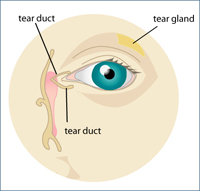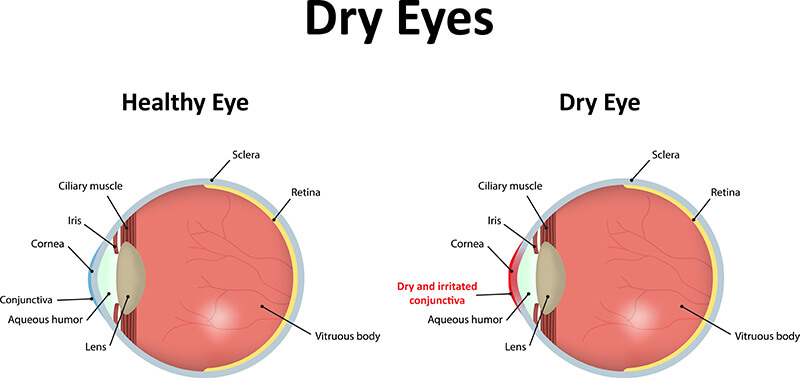While experiencing dry eyes once in a while is normal, chronic dry eye symptoms are not.
If you find yourself feeling the need to rub your eyes every few minutes, or rely on eye drops to get you through the day, chances are you’re dealing with dry eye syndrome.

What is Dry Eye Syndrome?
Dry eye syndrome is an extremely common chronic condition that affects millions of Americans each year.
Many things can cause dry eye symptoms, but generally, they are caused by poor quality tear production. To understand how dry eye syndrome occurs, you must first understand the tear film.
Tears are made up of three distinct layers, each with its own important job:
Oil layer: this outermost layer is responsible for keeping tears from evaporating, as well as providing a smooth surface for the eyelids to glide over. The oil component of tears is produced in the meibomian glands, located in the eyelids.
Water layer: also called the aqueous layer, this layer is responsible for keeping the eye lubricated. This layer makes up the majority of the tear film.
Mucous layer: This layer acts as an anchor, keeping the tear film coating the cornea. This helps with even tear distribution over the cornea.
The most common type of dry eye syndrome is called “evaporative dry eye.” This occurs when the oil layer is not sufficient. This is usually due to clogged meibomian gland ducts.
When the oil layer is not present, the aqueous tear layer evaporates quickly, creating dry eye symptoms.
Dry Eye Symptoms
Dry eye syndrome can be very uncomfortable, and sometimes downright annoying.
If you are experiencing any of these symptoms, you may have dry eye syndrome:
- Dryness
- Redness
- Itchiness
- Excessive tearing
- Foreign body sensation (like something is in your eye)
- Grittiness
While these symptoms may not be serious, it is best to see your eye doctor when you experience these symptoms every day. Over time, dry eye syndrome can cause corneal scarring or other issues.

Dry Eye Treatments
Dry eye syndrome does not always require treatment beyond over-the-counter eye drops. If your symptoms impact your life daily, however, it may be time for more comprehensive treatment.
Other treatments include punctual plugs, LipiFlow®, and medicated eye drops. Are you experiencing dry eye symptoms? It may be time to make an appointment.
Contact us today!

